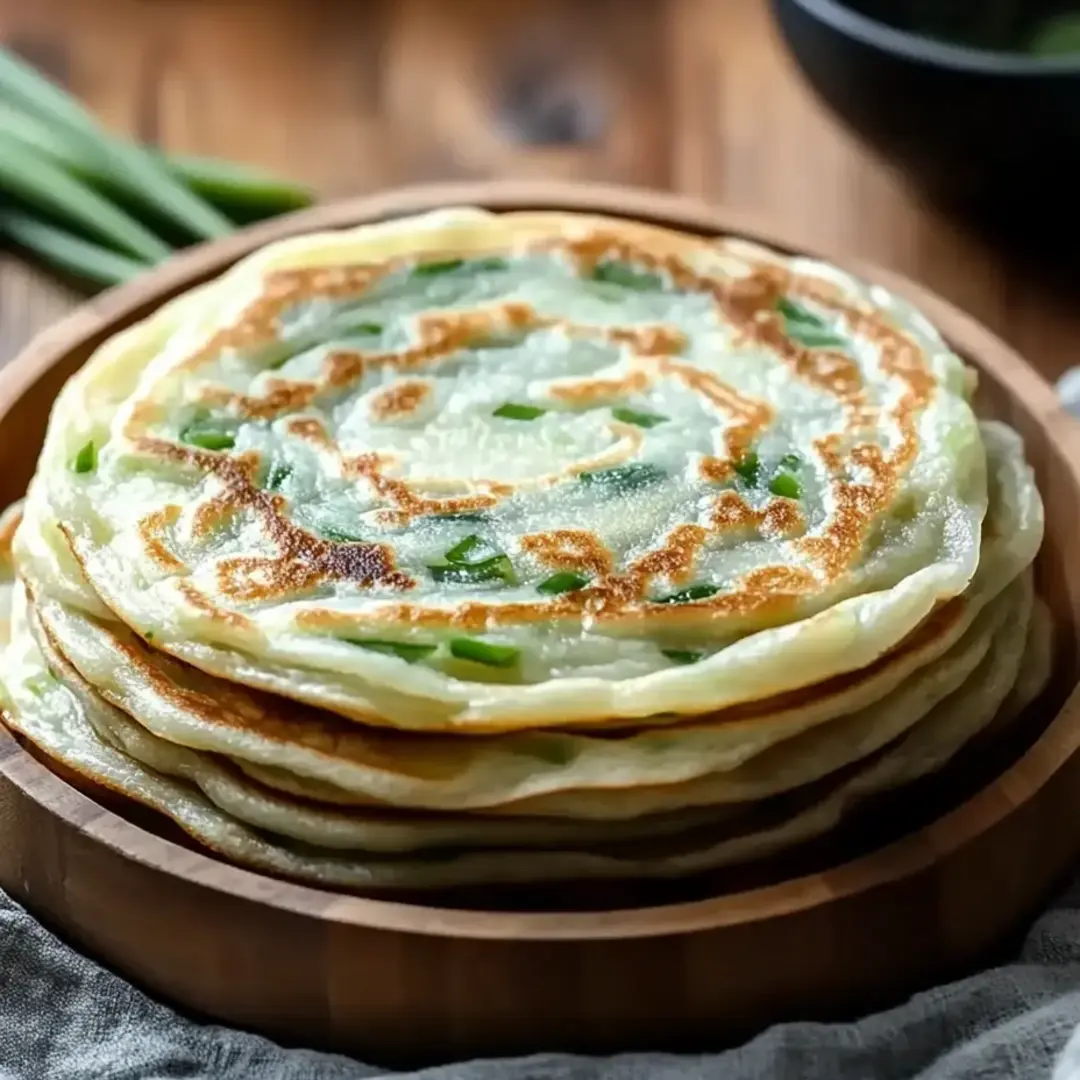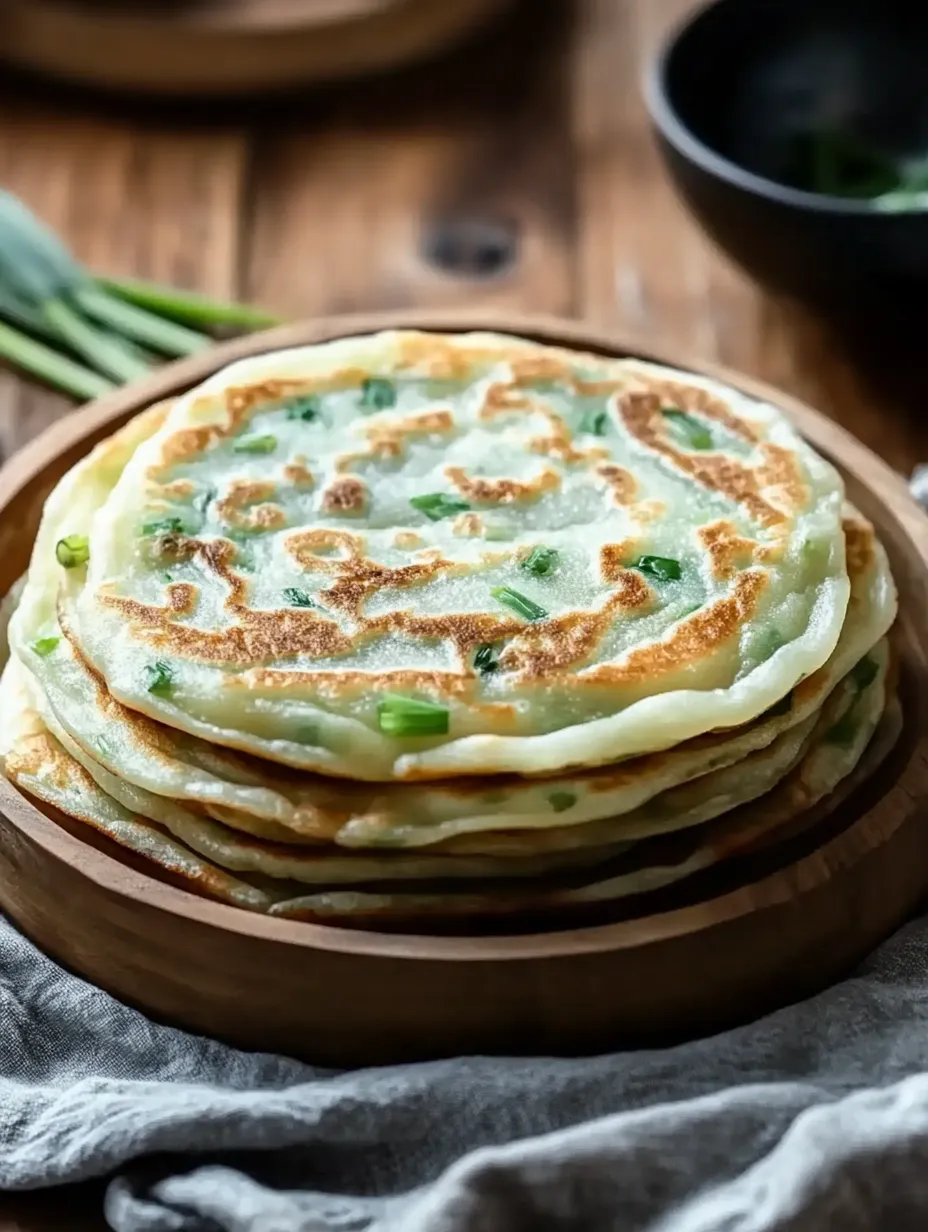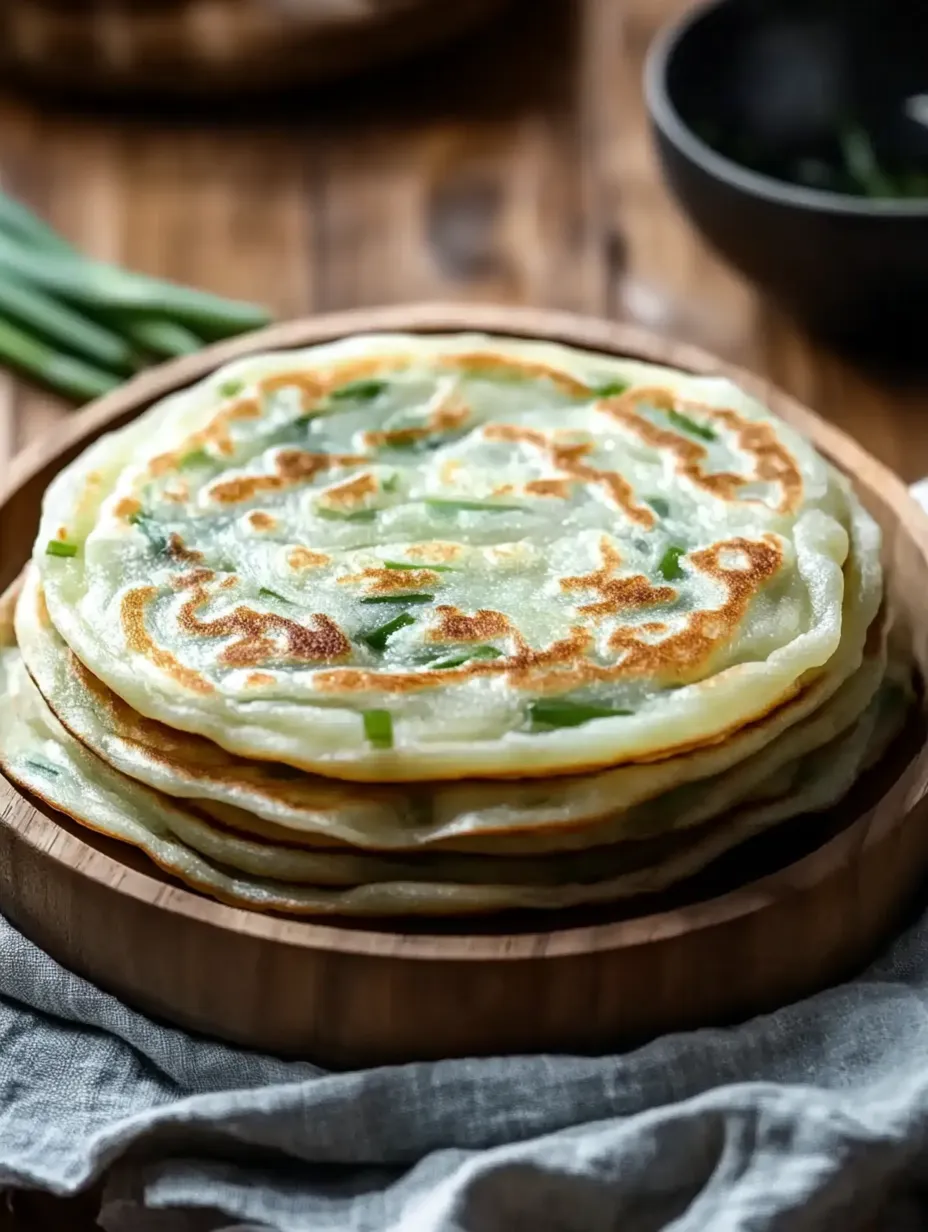 Pin it
Pin it
Crispy edges giving way to tender, chewy layers infused with aromatic scallions - Chinese scallion pancakes deliver an irresistible combination of textures and flavors that's kept them popular for centuries. These savory flatbreads, known as "Cong You Bing" in China, transform simple ingredients into something truly special through a unique folding technique that creates their signature flaky texture.
I made these pancakes last weekend when my sister visited, and she couldn't believe they weren't from our favorite Chinese restaurant. She kept sneaking pieces from the serving plate long after dinner was over. There's something about that perfect balance of savory scallions, nutty sesame oil, and crispy-chewy texture that makes it impossible to eat just one piece.
Essential Ingredients and Their Purpose
- All-purpose flour: Creates structure while allowing tenderness (2 cups)
- Hot water: Develops dough elasticity (¾ cup at 180°F)
- Sesame oil: Provides nutty flavor and layer separation (1 tbsp + more for brushing)
- Scallions: Star aromatic ingredient (1 cup finely chopped)
- Salt: Enhances all flavors (½ tsp + more for sprinkling)
 Pin it
Pin it
Step-by-Step Cooking Instructions
- Create dough base:
- Mix flour and salt, add hot water gradually to form shaggy dough
- Knead and rest:
- Knead 5 mins until smooth, rest covered 30 mins
- Roll and flavor:
- Divide into 4, roll thin, brush with sesame oil, sprinkle scallions and salt
- Form layers:
- Roll into cylinder, coil like snail shell, flatten gently
- Cook to perfection:
- Pan-fry in vegetable oil 2-3 mins per side until golden and crisp
Historical & Cultural Context
With origins dating back 2000+ years to China's Han Dynasty, scallion pancakes (Cong You Bing) represent one of the world's oldest layered bread techniques. Northern Chinese provinces developed this wheat-based staple, contrasting with rice-dominant southern regions. Street vendors traditionally cook them on large iron griddles, serving them folded in paper for breakfast with warm soy milk.
 Pin it
Pin it
Texture Science
The signature flakiness comes from laminating oil-brushed dough layers (similar to puff pastry but with sesame oil instead of butter). When cooked, steam separates the layers while the exterior crisps in hot oil. Proper gluten development from kneading creates the ideal chewiness.
Regional Variations
- Shanghai: Thicker with more scallion layers
- Taiwanese: Often includes pork fat in the dough
- Sichuan: Spiced version with chili oil
- Modern fusion: Kimchi or cheese fillings
Perfect Dipping Sauces
- Classic: 1:1 soy sauce and black vinegar with chili flakes
- Northern style: Garlic-infused soy sauce with sesame seeds
- Sichuan: Chili oil with crushed peanuts
- Sweet-savory: Hoisin mixed with rice vinegar
I learned these tips the hard way during my first attempts at making scallion pancakes. My initial batch turned out tough and dense because I used cold water and rushed the resting time. Now I treat the process as a meditative cooking experience, and the results are consistently restaurant-quality.
After making scallion pancakes regularly for family dinners, I've found that the quality of your scallions makes a noticeable difference. I now seek out the freshest ones with firm, bright green tops at my local farmers' market. The extra effort in ingredient selection elevates these pancakes from good to memorable, creating that moment of silent appreciation when everyone at the table is too busy enjoying their food to speak.
Frequently Asked Questions
- → Why use hot water for the dough?
- Hot water partially cooks the flour, creating a softer, more pliable dough that's easier to work with and produces a chewier texture in the final pancake.
- → Can I make these ahead of time?
- Yes! You can prepare the dough and even shape the pancakes in advance. Store them separated by parchment paper in the refrigerator for up to 24 hours before cooking.
- → What dipping sauce goes well with scallion pancakes?
- A simple mixture of soy sauce, rice vinegar, and a drop of sesame oil makes a perfect dipping sauce. You can add minced garlic or chili oil for extra flavor.
- → Why aren't my pancakes flaky enough?
- The flakiness comes from proper layering. Make sure to roll thinly before adding scallions, roll tightly into a log, and then coil properly. Also, don't skip the resting time which allows the gluten to relax.
- → Can I add other ingredients besides scallions?
- Yes! Try adding minced garlic, sesame seeds, or Chinese five-spice powder for variations. Some recipes include a thin layer of butter instead of sesame oil for extra richness.
